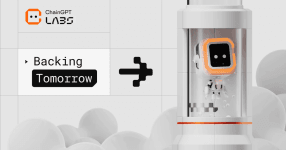Sublime
An inspiration engine for ideas
The Potential of Blockchain Technology
joincolossus.comChainGPT Labs | Fund, Incubate and Accelerate Web3 Projects
labs.chaingpt.org
Layer 2s
"Layer 2 refers to a secondary framework or protocol that is built on top of an existing blockchain system. The main goal of these protocols is to solve the transaction speed and scaling difficulties that are being faced by the major cryptocurrency networks."
Kassen Qian • 1 card
Aggregators: Aggregating an individual's on-chain activities spread across multiple wallets and chains.
Shrey Jain • On-chain identity landscape
Chronicled is a start-up that has raised $3.4 million, and is working on a very industry- specific use-case of
Tim Lea • Blockchain: Down The Rabbit Hole: (Discover The Power Of The Blockchain)
disperse
disperse.app

Ethereum
sari and • 48 cards